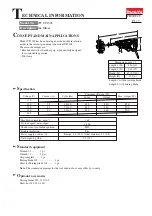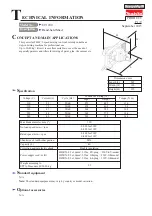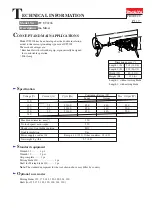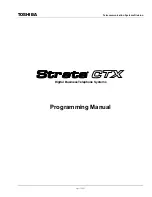
DC16 Owner’s Manual
51
• TRIM Encoder (ALT + GAIN)
This encoder adjusts the level of the digital trim
of the selected input
. Trim is a digital level control at
the top of the channel’s processing. It affects all input sources to the channel whether analog or digital
and is used for adding or removing level to a channel before any of the channel processing.
The trim ranges from –40 dB to +20 dB and adjusts in ±1 dB to ±2.5 dB increments.
A visual representation of the changes may be seen on the channel’s input routing screens on Master
Fader.
So what is the difference between gain and trim? When would you use gain and when
would you use trim? In short, gain is analog, while trim is digital (right after the A/D
conversion but before everything else). So if the source is analog, you would use gain.
In most cases, you will adjust (analog) gain, not (digital) trim. In some cases, though,
you may use both. If the source is digital, you would use trim since it doesn’t have gain.
• 48v Phantom Power Button
This button turns phantom power on and off
of the selected input
. The 48v button LED illuminates
red on channels that have phantom power engaged.
It has no effect if the selected channel does not have a mic pre.
A visual representation of the change may be seen on the channel’s input routing screen on Master
Fader.
• Polarity Invert [Ø] Button
This button turns polarity on and off
of the selected input
. The polarity button [Ø] LED illuminates
orange on channels that have polarity engaged.
It has no effect if the selected channel does not have a polarity invert.
A visual representation of the change may be seen on the channel’s input routing screen on Master
Fader.
• HPF Encoder
This encoder adjusts the High Pass Filter frequency
of the selected input or output
. The HPF frequency
is changed by rotating the encoder and turned on [green] or off [white] by pushing the encoder.
High-pass filters are utilized to cut out low frequencies. The high-pass filter control adjusts the cut-off
frequency for the filter.
The HPF ranges from Off to 700 Hz (inputs) and Off to 20 kHz (outputs). The incremental adjustments
are dependent on if the selected EQ is modern or vintage.
A visual representation may be seen on the EQ screens on Master Fader.
• LPF Encoder (ALT + HPF)
This encoder adjusts the Low Pass Filter frequency
of the selected output
. [There are no LPF on inputs].
The LPF frequency is changed by rotating the encoder and turned on [green] or off [white] by pushing
the encoder. Low-pass filters are utilized to cut out high frequencies. The low-pass filter control adjusts
the cut-off frequency for the filter.
The LPF ranges from Off to 20 kHz. [There is no LPF on the vintage EQ].
A visual representation may be seen on the EQ screens on Master Fader.
















































